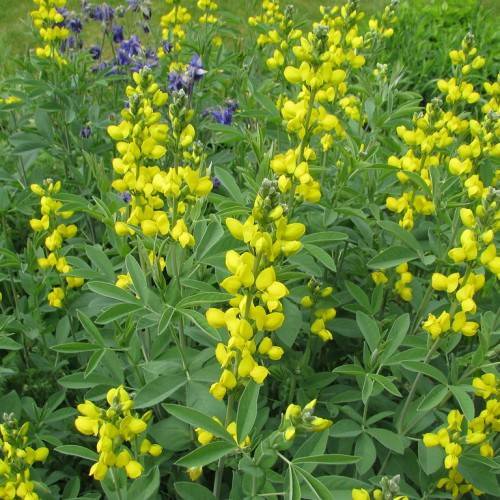
Carolina lupine
Thermopsis villosa
Cycle:
Herbaceous Perennial
Watering:
Minimum
Hardiness Zone:
4 - 9
Flowers:
Flowers In Summer
Sun:
Full sun
Leaf:
Yes
Growth Rate:
Low
Maintenance:
Low
Drought Tolerant:
Yes
Salt Tolerant:
Yes
Care Level:
Medium
watering
Carolina lupine (Thermopsis villosa) should be watered approximately once per week during the summer months to help the plant establish a healthy root system. In the spring, water should be given more frequently, about every 5-7 days. In the fall, watering should be reduced and allowed to occur every 10-14 days. During the winter, the plant should be watered every 2-3 weeks. For Carolina lupine, deep watering is preferred as it helps to encourage deeper roots. Aim to water until the soil is moist but not saturated. Avoid allowing the soil to become dry, and keep an eye on the moisture levels as extreme dryness can cause the plant to stressed.
sunlight
Carolina lupine (Thermopsis villosa) is a plant species that thrives best with full sun exposure throughout the day. It prefers 6-8 hours of direct sunlight, and morning sunlight is the most beneficial. If grown in partial sun or shade, the plant will produce a lower number of blooms. It is also important to consider afternoon light, as the intense heat from the sun can cause the plant to become stressed or burned. To help protect the delicate leaves, growing the Carolina lupine in an area with partial afternoon shade is recommended.
pruning
Carolina lupines should be pruned in late winter or early spring, before the plant begins to flower. For annual pruning, prune the branches back to the desired shape. To encourage more bushiness and flowering, remove spent flowers and pinch off new flower buds as they appear. For more extensive pruning, remove a few of the oldest branches to the ground level. This will help promote bushiness and new growth. Pruning can be done before flowering if necessary, but the plant should be allowed to produce some flowers each year in order to develop healthy seedlings.
